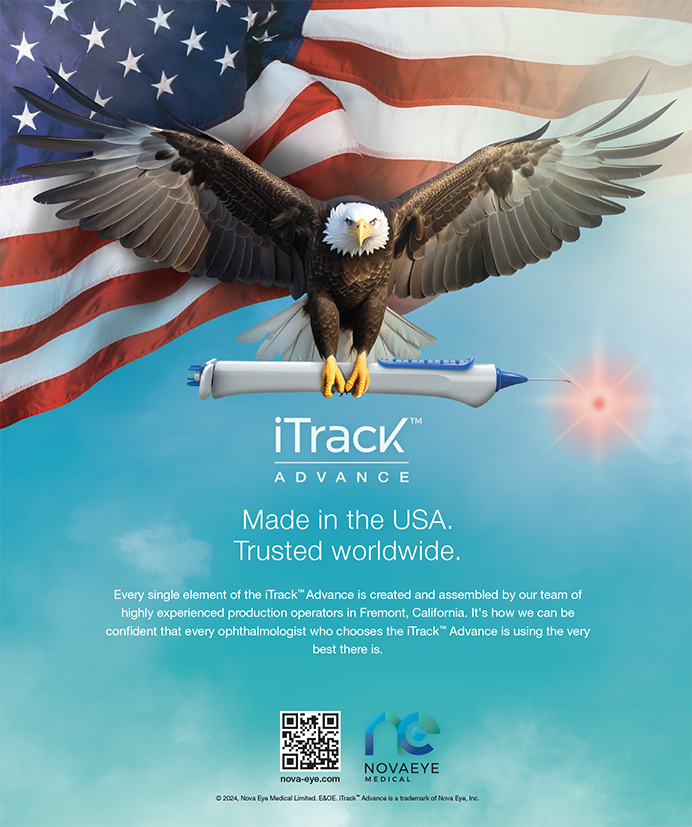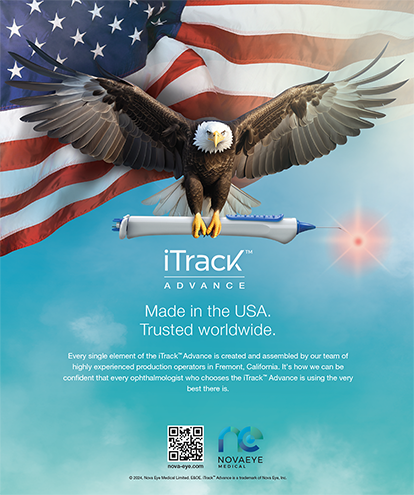Up Front | Jul 2002
Point Counterpoint: MMC—Friend or Foe in Refractive Surgery? Part 2
The nonselective use of mitomycin C in refractive surgery must be approached cautiously.
Edward E. Manche, MD
Despite recent reports of success in using adjunctive mitomycin C (MMC) for the treatment and prophylaxis of anterior stromal corneal haze resulting from PRK and LASEK, my colleagues and I encourage caution in the nonselective application of this potentially toxic medication for elective refractive surgical procedures. Widespread, nonselective application of MMC (especially when used improperly) may result in severe consequences. The ocular toxicity of MMC is well documented, with evidence of late-onset corneoscleral melting, loss of limbal stem cells, secondary glaucoma, corneal edema, corneal perforation, and iritis.1,2 Additionally, to our knowledge, no satisfactory studies have sufficiently documented the long-term ocular safety of this medication.
THERAPEUTIC WINDOW
MMC is a potent antineoplastic antibiotic isolated from Streptomyces caespitosus. It demonstrates long-lasting cellular suppression of fibroblast proliferation and collagen synthesis by cross-linking DNA and at high concentrations, inhibiting synthesis of RNA and protein. Unfortunately, MMC has a very narrow therapeutic window in which a slight increase in concentration results in extreme toxicity. Therefore, slight errors in the preparation or administration of this potent medication by professionals unfamiliar with its usage may result in disastrous consequences. Eyes with pre-existing ocular surface disease, such as aqueous tear deficiency, may have an even narrower therapeutic window.
OCULAR TOXICITY
Much of our understanding about MMC ocular toxicity has been extrapolated from studies in which MMC was applied to the sclera as an adjunctive use with glaucoma filtration surgeries or pterygium excisions. Long-term safety studies on corneal application have yet to be adequately performed in a rigorously controlled scientific environment. Because the cornea is less dependent upon vascular support than the sclera, we would anticipate less vascular-related consequences than that observed with scleral application. However, because the cornea may be more permeable than the sclera, intraocular toxicity needs to be assessed with current dosage regimens following corneal administration. This is particularly important as some evidence suggests that MMC may penetrate through intact cornea and sclera, as it has been isolated in the aqueous humor following topical application.3,4
INCIDENCE OF HAZE
In addition, corneal haze following refractive surgery has been minimized with recent developments in excimer laser technology. Even with early broad-beam excimer laser systems such as the S2 Excimer Laser (VISX, Inc., Santa Clara, CA), US FDA studies only demonstrated a 1.3% incidence of corneal haze associated with loss of two or more lines of BSCVA in eyes with high myopia (> -10.0 D) at 12 months.5 Developments in new excimer laser beam technology have resulted in an even more pronounced safety profile. In the US FDA premarket approval for the Autonomous LADARVision excimer laser (Alcon Laboratories, Fort Worth, TX) in November 1998, no eyes demonstrated significant corneal haze resulting in loss of BSCVA.6 In addition, our experience with the Technolas 217A excimer laser system (Bausch & Lomb, Rochester, NY) has demonstrated no significant corneal haze in over 100 eyes treated for high myopia with PRK (personal communication, June 2002). Although there is no definitive evidence suggesting that a smoother ablation results in a lower incidence of haze, small-spot scanning lasers typically require less fluence than broad-beam excimer lasers, and in our experience, have resulted in a lower incidence of corneal haze following PRK. Thus, the widespread use of prophylactic MMC to prevent haze in an ever-shrinking subset of eyes at risk must be approached with caution.
USE WITH CAUTION
Weldon Haw, MD, and I believe that it is unwise to expose 100% of eyes to MMC for a condition that will manifest itself in less than 2% of all eyes undergoing PRK. However, there may be a role for the treatment of haze following refractive surgery as shown by Majmudar et al,7 who demonstrated that a one-time application of low-dose MMC was effective in treating corneal haze following PRK. We do believe that judicious use of MMC may be useful in selective eyes when precautions are strictly followed. Careful patient selection, low-dose administration, low-duration exposure, appropriate technique, local application to the affected site, and aggressive irrigation following the use of MMC may limit future adverse events. In our current practice, the application of MMC is currently reserved for the treatment of significant corneal haze resulting in loss of visual function, and prophylaxis in a very select group of high-risk eyes (ie, fellow eye in a patient with corneal haze, PRK over radial/astigmatic keratotomy incisions). Eyes requiring extreme ablation depths (ie, high myopic treatments or moderate myopic treatments with large ablation zones) and patients with darker pigmented iris and/or skin are assessed on an individual basis.
IN CONCLUSION
The use of MMC for the treatment of corneal haze is a promising technique that, when used appropriately, may result in excellent outcomes. However, until sufficient studies on the long-term consequences of its use for these purposes has been adequately documented, we urge continued caution in the widespread, nonselective, and cavalier application of this potentially toxic medication. n
The author thanks Weldon W. Haw, MD, for his assistance with this article.
Edward E. Manche, MD, is Director of Cornea and Refractive Surgery at the Stanford University School of Medicine, in Stanford, California. Dr. Manche may be reached at (650) 725-5765; Edward.Manche@Stanford.edu
1. Rubinfeld RS, Pfister RR, Stein RM, et al: Serious complications of topical mitomycin-C after pterygium surgery. Ophthalmology 99:1647-1654, 1992
2. Dougherty PJ, Hardten DR, Lindstrom RL: Corneoscleral melt after pterygium surgery using a single intraoperative application of mitomycin-C. Cornea 15:537-540, 1996
3. Sarraf D, Eezzuduemhoi RD, Cheng Q, et al: Aqueous and vitreous concentration of mitomycin C by topical administration after glaucoma filtration surgery in rabbits. Ophthalmology 100:1574-1579, 1993
4. Mietz H, Rump AF, Theisson M, et al: Ocular concentration of mitomycin C after extraocular application in rabbits. J Ocular Pharmacol Thera 11:49-55, 1995
5. VISX STAR S2 Excimer Laser System. Photorefractive Keratectomy (PRK)–Professional Use information (1999)
6. U.S. Food and Drug Administration Pre-Market Approval. Autonomous Excimer Laser System. (November 1998)
7. Majmudar PA, Forstot SL, Dennis RF, et al: Topical mitomycin C for subepithelial fibrosis after refractive corneal surgery. Ophthalmology 107:89-94, 2000


